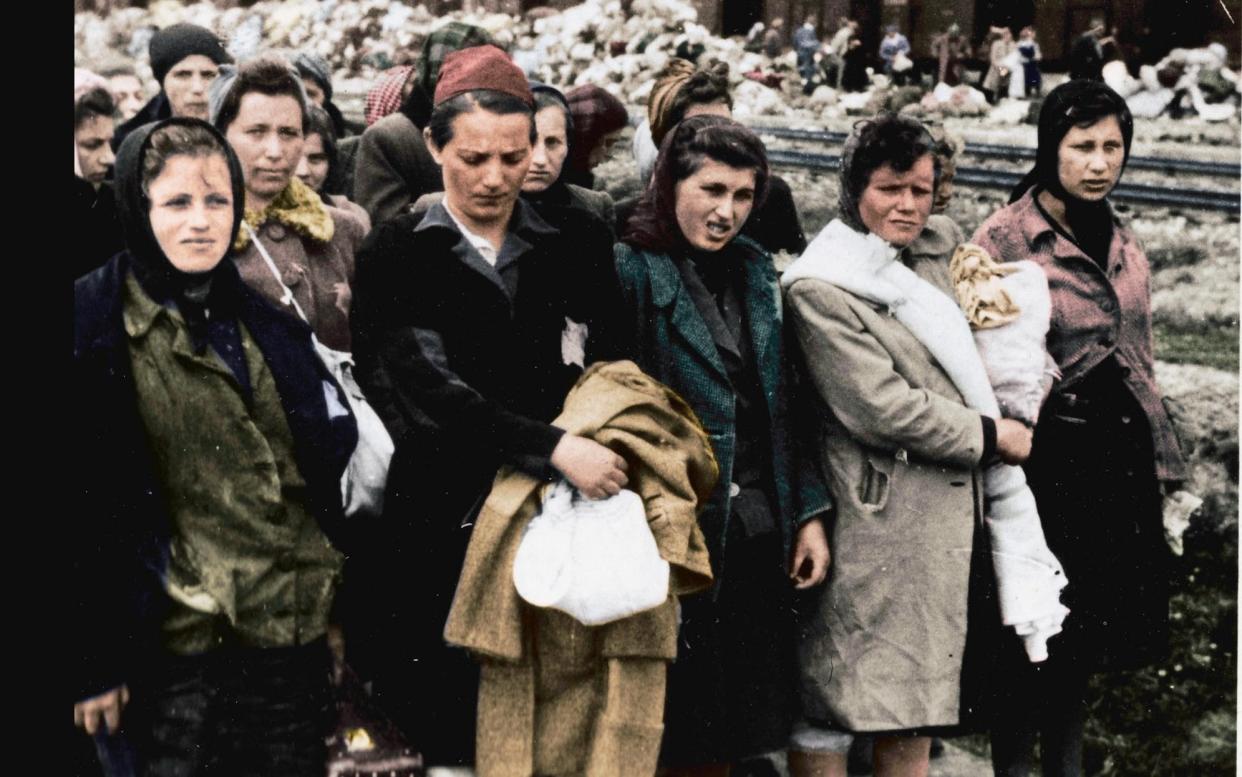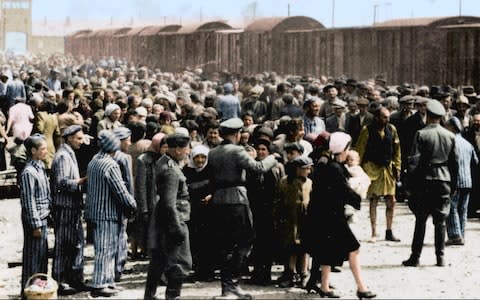Auschwitz Untold: in Colour, review - the startling force of seeing the Holocaust in colour

Today marks the 75th anniversary of the liberation of Auschwitz. It is being commemorated in many ways around the world, but it will pass many people by. A survey carried out in the US in 2018 found that two-thirds of millennials did not know what Auschwitz was.
Auschwitz Untold: in Colour (More4, concluding Monday, 9pm) was aimed at them, and the generation that has come after them. Director David Shulman explained: “The colourisation of black and white archive is one aspect of making this history more accessible to a younger audience, and giving greater humanity to the people seen in the footage.” It is a technique successfully deployed in other films about the Second World War, and in Peter Jackson’s fine First World War documentary, They Shall Not Grow Old.
One could argue that this shouldn’t need to be done; that the Holocaust in monochrome is no less horrific. But when the film opened with colour footage of Jews being herded through the camps, it was undeniably startling. The force of it was felt most keenly in the faces of bewildered children. All of a sudden they were not faces from a distant past, a period of history dealt with so often in fiction that it can take on an air of unreality. They are children like yours; a brother or sister.

The title suggested that the programme would consist entirely of colour footage, but actually that was used sparingly. The focus was on the testimonies of 15 Holocaust survivors, most of them children when the war broke out. Last year’s superlative BBC One documentary, The Last Survivors, explored the different ways in which those who lived through the Holocaust have dealt with the trauma. Shulman’s film stuck with a recounting of history for an audience unfamiliar with the territory. The rise of Hitler was simply explained, as was Kristallnacht. We were told what ghettos were, and that the myth of Jews controlling the economy was a form of “fake news”. But it did not shy away from the most gruesome aspects, with scenes of corpses and charred remains.
The stories of children being separated from their parents were truly heartbreaking. We also heard from a member of the Jewish resistance. “We didn’t go like sheep,” she said. “We tried to defend the honour of our people and take revenge.” One man displayed the number tattooed on his arm and was asked if he had ever thought of having it removed. No, he replied. “I have nothing to be ashamed of. The Germans should be ashamed of what they did. Why should I remove it?”

 Yahoo News
Yahoo News 
